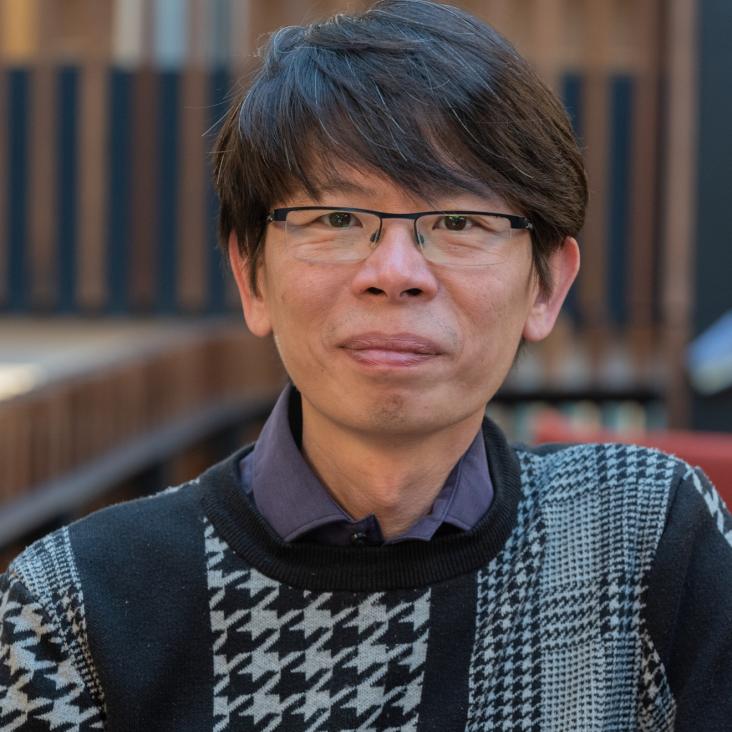Exploring the limits of the tunnel junction fabrication technique for Josephson junctions TWPA and the preliminary characterisation results
32nd International Symposium on Space Terahertz Technology (ISSTT 2022) International Symposium on Space Terahertz Technology (2024) 120-123
Abstract:
Travelling Wave Parametric Amplifiers (TWPAs) can potentially achieve quantum limited noise over a broad bandwidth in the microwave regime, with potential applications in the readout of millimetre (mm) and sub-millimetre (sub-mm) receivers to further improve the system sensitivity, among many other applications. TWPAs using embedded Josephson junctions (J-TWPA) have proven to exhibit noise performance approaching the quantum limit, however its compression point (P–1dB ~ –100 dBm) is too low for reading out mm and sub-mm astronomical receivers. Therefore, we explored the design of higher dynamic range JTWPAs to match the power requirements, and to optimise the performances of the JTWPA for this specific application. Our aim is to adapt the well-established Nb-AlOx-Nb tri-layer fabrication technique used routinely for developing high-quality Superconductor-Insulator-Superconductor (SIS) tunnel junctions to fabricate our JTWPA. Therefore, we present in this paper our investigation of the feasibility of such technique in fabricating large number of lower critical current density junctions embedded in a coplanar waveguide (CPW). The preliminary results on a 500-junctions device are in line with the expected behaviour, showing a measured gain consistent with theoretical calculations which demonstrates the potential use of the tri-layer tunnel junction technology for the fabrication of JTWPAs.Non-degenerate-pump four-wave mixing kinetic inductance travelling-wave parametric amplifiers
Engineering Research Express IOP Publishing 6:1 (2024) 015068
Abstract:
Kinetic inductance travelling-wave parametric amplifiers (KITWPAs) have been demonstrated to achieve high gain over broad bandwidths whilst achieving near quantum-limited noise performance, properties which are extremely important for many ultra-sensitive experiments. In early KITWPA designs, the requirement for phase-matching lead to the creation of a large zero-gain gap in the centre of the gain profile where the peak gain is, which also slightly narrows down the operational bandwidth of the device. This has been mitigated in more recent designs by introducing a DC bias to the KITWPA device, which allows the gap to be tuned away from the amplification band. However, the added DC biasing requires a more complicated experimental setup and potentially leads to unwanted heat leak in the cryogenic environment. Additionally, operation with a DC bias also become challenging at higher frequencies beyond the microwave regime. In this paper, we present the concept of a KITWPA operating in a non-degenerate-pump four-wave mixing (NP-4WM) regime, whereby the injection of two pump tones along with a weak signal results in a broad, flat gain profile that removes the zero-gain gap as well as eliminates the need for a DC bias and the complexities associated with it. We demonstrate how a NP-4WM KITWPA is feasible to achieve broadband amplification at a range of frequencies, first in the microwave range where most KITWPAs reported to-date have been successfully experimentally characterised. We then extend the designs to several millimetre (mm) bands to illustrate how we can use this technique to design a broadband front-end pre-amplifier that covers several Atacama Large Millimetre/sub-millimetre Array (ALMA) Bands.Operation of kinetic-inductance travelling wave parametric amplifiers at millimetre wavelengths
Superconductor Science and Technology IOP Publishing 37 (2024) 035006
Abstract:
It is expected that the operation of microwave Kinetic Inductance Travelling Wave Parametric Amplifiers (KITWPAs) can be extended to the millimetre (mm) and the sub-mm wavelength range as long as the frequency is below the gap frequency of the superconducting film. This paper presents possible mm-wave designs for KITWPAs based on microstrip transmission lines. Our device is designed based on the BCS (Bardeen-Cooper-Schrieffer) model which successfully reproduces the measured transmission profile, gain, bandwidth, and nonlinear response of a fabricated KITWPA operating in the Ka-band, and includes the millimetre-wave dielectric loss determined by fitting the quality factor of a Wband microstrip resonator. We suggest a layout for a KITWPA operating near 220 GHz that can be fabricated using the same superconducting properties as the Ka-band device and can be coupled to a waveguide system. We conclude the paper by extending the 220 GHz design to higher frequency regimes approaching 1 THz.Embedding Impedance Recovery in a Twin-Junction SIS Mixer
International Symposium on Space Terahertz Technology Isstt 2024 (2024)
Abstract:
We describe a method for calculating the embedding impedance of an SIS mixer employing twin junction tuning. Calculation of the embedding impedance is done using equivalent transmission line circuits of the mixer, the measured pumped and unpumped IV curves of the mixer chip and the Tucker theory expressions of the tunneling currents. Our simulation method does not require the individual IV curves of the two junctions.Heterodyne Spectrometer Instrument (HSI) for Far-IR Spectroscopy Space Telescope (FIRSST)
International Symposium on Space Terahertz Technology Isstt 2024 (2024)


